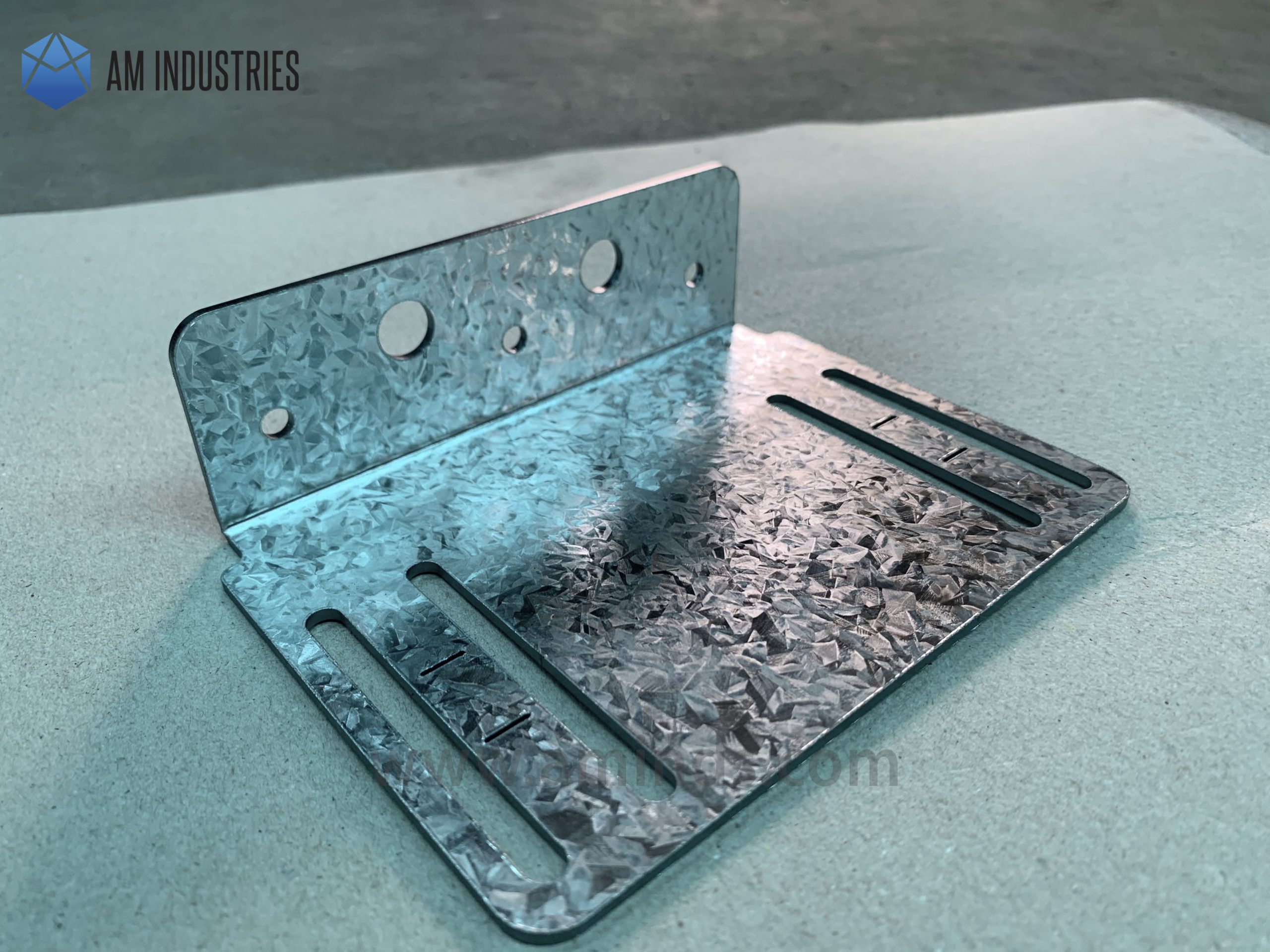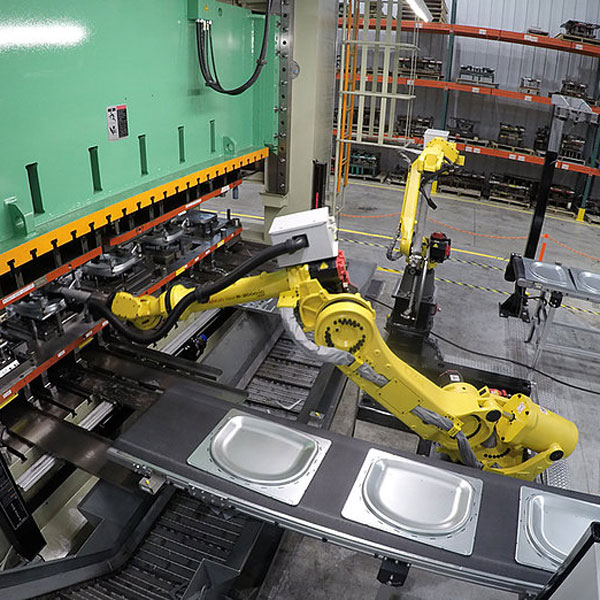How Metal Stamping Transforms Production Efficiency
How Metal Stamping Transforms Production Efficiency
Blog Article
Letting Loose the Possible of Steel Stamping: Specialist Tips and Finest Practices Exposed
In the realm of steel stamping, where precision and performance reign supreme, the mission to maximize procedures and unlock covert possibilities is a continuous pursuit. As we navigate with the detailed world of metal marking, a more detailed look at the complexities of tooling style, product option, production effectiveness, top quality control, and emerging patterns assures a prize trove of insights waiting to be uncovered.
Tooling Layout Optimization
Optimizing tooling style is crucial for improving effectiveness and precision in steel marking processes. A well-thought-out tooling layout can significantly impact the high quality and cost-effectiveness of metal stamping operations. By very carefully taking into consideration factors such as material selection, die configuration, and part geometry, producers can improve production processes and improve overall item quality.
One key aspect of tooling design optimization is picking one of the most ideal products for the punches and passes away utilized in the stamping process. Materials with high wear resistance and strength are chosen to guarantee durability and reduce tooling maintenance requirements. Additionally, die configuration plays a critical duty in attaining uniformity and uniformity in stamped components. Correct die layout can help avoid problems such as wrinkling, tearing, and extreme springback, resulting in greater manufacturing returns and lowered scrap rates.
Furthermore, enhancing part geometry via tooling design can aid reduce product waste and production time. By thoroughly forming dies and punches to match the preferred component specifications, suppliers can accomplish tighter resistances and enhanced component high quality. On the whole, investing time and sources in enhancing tooling layout can lead to substantial long-lasting benefits for steel stamping operations.

Product Selection Methods
Strategically picking materials for metal stamping tooling is critical for making certain resilience and efficiency in making processes. When selecting products for metal marking applications, several vital factors have to be thought about.
One more vital aspect in material option is the anticipated production volume - Metal Stamping. For high-volume manufacturing runs, tooling materials with superior wear resistance and sturdiness, such as device steels or carbide, are frequently preferred to hold up against the roughness of constant marking procedures
Moreover, the complexity of the stamping layout and the needed precision also play a substantial duty in product choice. For elaborate stamping patterns or tight resistances, products with high thermal conductivity and superb machinability, like beryllium copper or device steel alloys, might be better to achieve the desired outcomes.
Manufacturing Effectiveness Methods
To boost making result and decrease manufacturing prices, implementing efficient strategies in steel stamping processes is important. Automated steel marking machines can carry out jobs with accuracy, uniformity, and at a much faster price than hand-operated labor, leading to increased efficiency and lowered cycle times.
Another method to boost manufacturing efficiency is through continuous procedure improvement. Conducting normal audits and efficiency analyses can aid determine bottlenecks, ineffectiveness, and areas for enhancement within the metal stamping procedure. By analyzing data and feedback from these assessments, makers can carry out targeted remedies to enhance procedures, boost throughput, and maximize total effectiveness.
Additionally, adopting lean production concepts, such as 5S methodology and Kanban systems, can help eliminate waste, improve workflow, and improve general performance in steel marking operations. By fostering a culture of constant enhancement and encouraging workers to contribute concepts for performance gains, suppliers can open the complete capacity of their steel marking procedures.
Quality Assurance Procedures
Structure on the structure of effective production methods in metal marking processes, making sure strict quality assurance steps is critical for keeping product requirements and customer fulfillment. Quality assurance in steel stamping includes organized assessment, testing, and surveillance of the manufacturing refines to identify and rectify any type of inconsistencies or problems that can compromise the end product's honesty (Metal Stamping). Applying measures such as regular tools maintenance, in-process examinations, and extensive screening of finished parts can assist detect problems early on and avoid pricey rework or item recalls
Routine audits and reviews of top quality processes can aid determine locations for enhancement and make certain consistency in product top quality. By promoting a society of high quality awareness among staff members and supplying adequate training on top quality control procedures, suppliers can improve total product integrity and brand online reputation.

Cutting-edge Steel Stamping Technologies
Advancements in metal stamping innovations have transformed the production market, enhancing efficiency and accuracy in the manufacturing procedure. Servo presses provide unequaled page control over the stamping procedure, allowing for changes in pressure, dwell, and speed time with extraordinary accuracy.

In addition, the fostering of additive manufacturing methods in steel marking, such as 3D printing of die components, has structured the tooling layout and manufacturing process. This method permits greater style adaptability, rapid prototyping, and expense financial savings in tooling manufacturing. By leveraging these innovative modern technologies, suppliers can unlock brand-new degrees of performance, top quality, and competitiveness in the metal marking sector.
Final Thought
To conclude, the optimization of tooling layout, calculated product choice, effective manufacturing methods, high quality control measures, and cutting-edge technologies are vital for letting more information loose the complete potential of metal marking. By carrying out these ideal practices and experienced tips, manufacturers can enhance efficiency, boost high quality, and stay affordable in the metal marking industry. It is vital for companies to continually evaluate and improve their procedures to accomplish success in this field.
As we navigate with the intricate globe of steel marking, a more detailed look at the details of tooling layout, product selection, manufacturing effectiveness, high helpful site quality control, and emerging patterns assures a prize trove of understandings waiting to be uncovered. A well-balanced tooling style can considerably affect the high quality and cost-effectiveness of steel stamping operations.Building on the structure of effective production methods in metal marking procedures, making sure strict top quality control steps is crucial for maintaining item standards and client complete satisfaction. Quality control in steel stamping includes organized evaluation, screening, and monitoring of the manufacturing refines to identify and remedy any kind of discrepancies or issues that could jeopardize the last product's stability.In verdict, the optimization of tooling layout, tactical product option, efficient production strategies, quality control steps, and ingenious modern technologies are important for releasing the complete potential of metal marking.
Report this page